I have a very special guest post today by Cameron! He is the builder around here and because he can explain this way better than I can, he is going to give you all the details on how to build a low tunnel. I also made my first ever YouTube video to explain the process of how to build a low tunnel if you prefer to just watch rather than read.

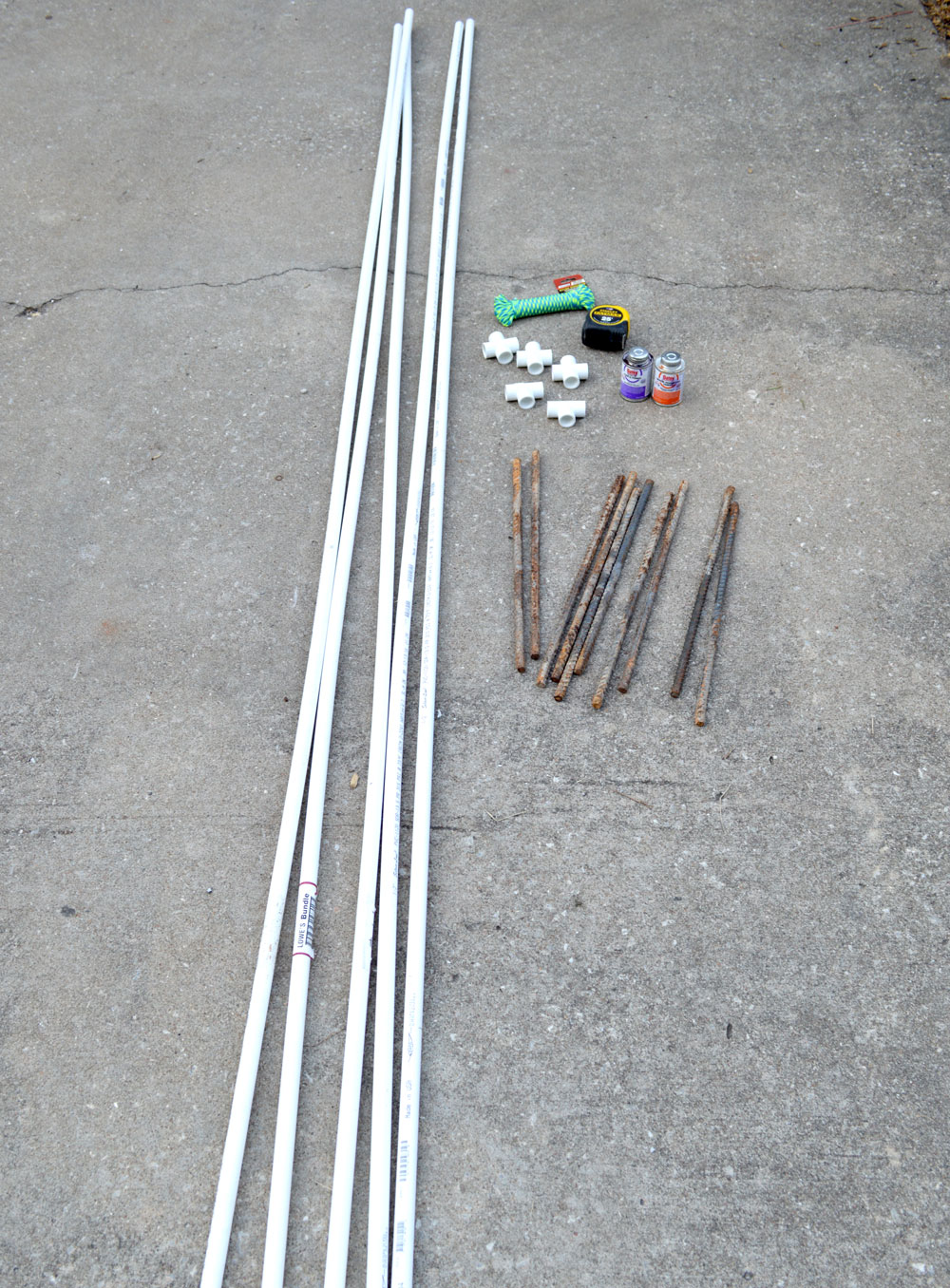
Hello! With the supplies pictured here, you will make a low tunnel that will cover up to a 9ft by 4ft section of garden. Each tunnel should take between 30 minutes to an hour to complete. Your first one will take the longest, then once you have the process down, it will become much quicker. Supplies needed for this project:
-
(5) – 10ft lengths of 1/2” PVC pipe (thinner diameter is preferred, more on that below)
-
(10) – 24inch pieces of rebar. Your hardware store should have them in 2ft lengths
-
5 or more “plus” shaped pipe fittings for 1/2’“ pipe
-
PVC pipe primer & cement
-
Measuring tape
-
Saw for cutting the pipe; handheld or power miter saw
-
20ft of thin rope/paracord
-
A large pot of boiling water
-
A funnel, and a way to pour the boiling water into the funnel without burning yourself. I use a tempered glass 1qt pyrex with a handle.
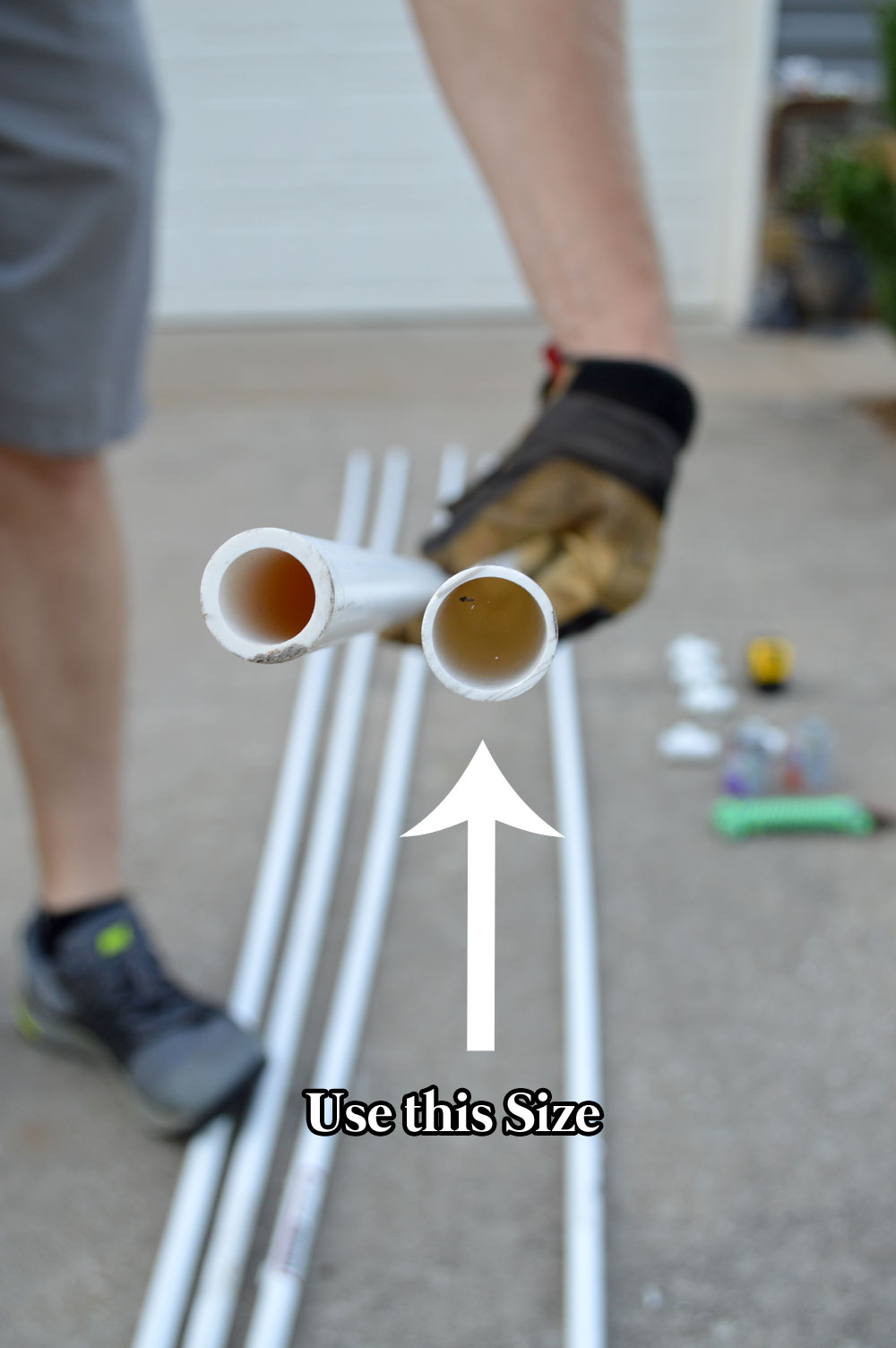
Until recently, I wasn’t aware of varying thicknesses of the white PVC pipe. In plumber language, the thicknesses correspond to their PSI rating. The thicker pipe is rated at 600PSI, the thinner pipe rated 315 PSI. You can still use the thicker pipe for this project, it will just be slightly harder to bend to shape. I prefer the thinner pipe.
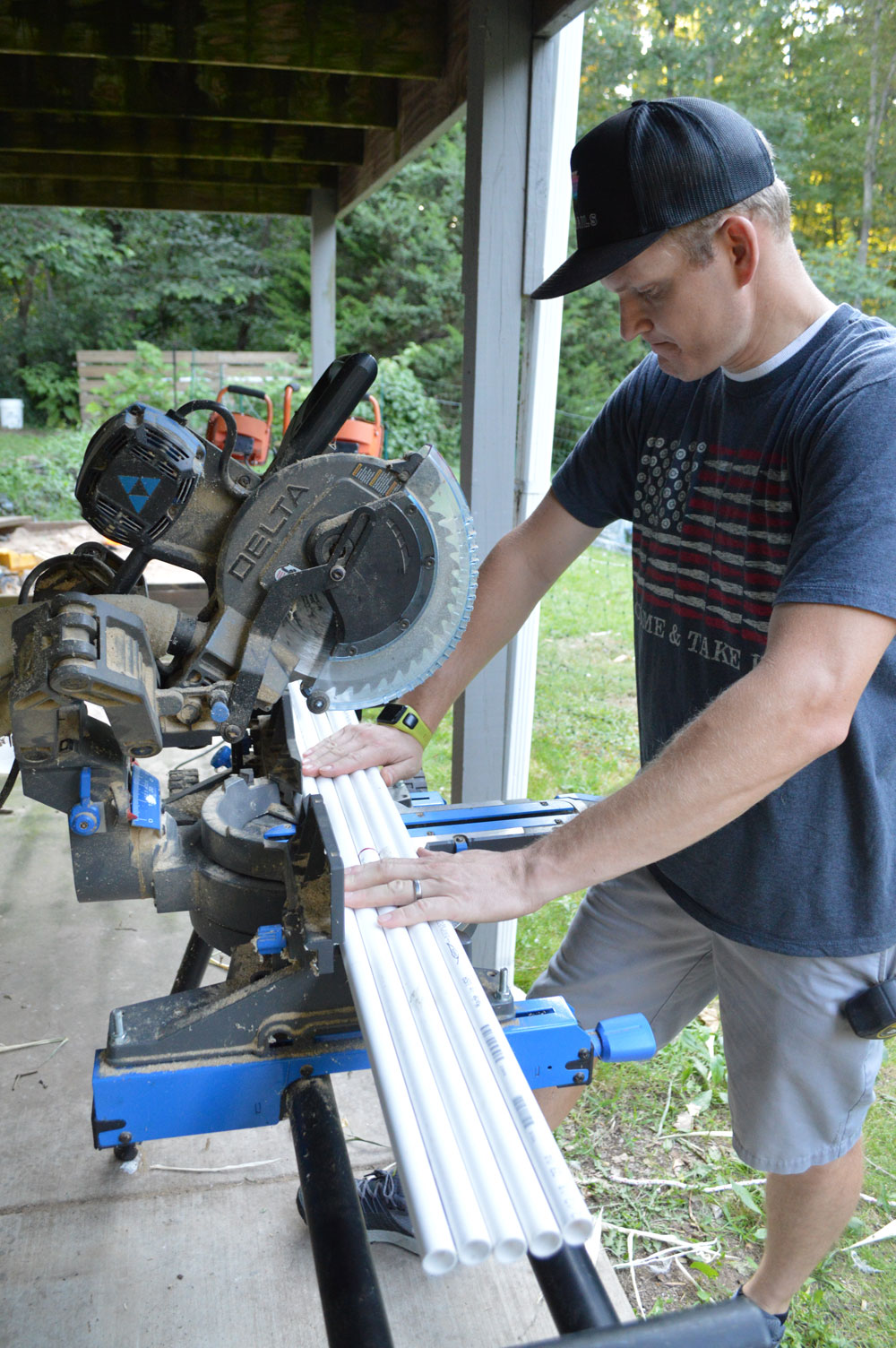
First cut will be 2 ft off the ends of each pipe. This leaves you with five 8ft sections that will become the “ribs”, and five 2ft sections that will create the “backbone” of the low tunnel. Set the 2ft pieces aside for now…
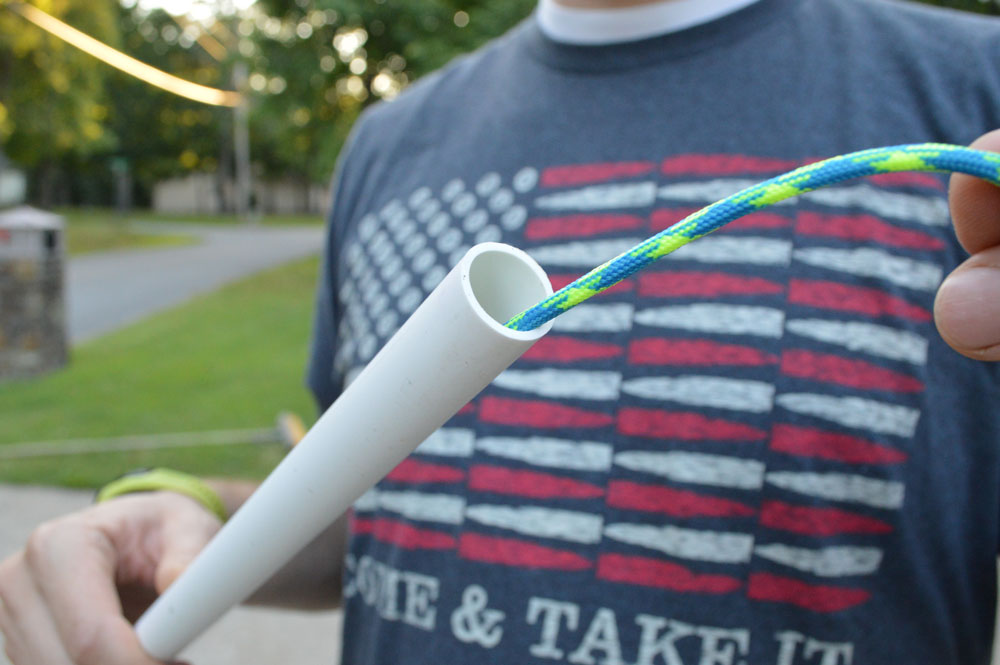
As your water heats to a boil, thread the 8ft pipes one by one with the rope. I tie a loop on the end that I am NOT pushing through the pipe. You’ll see why soon…
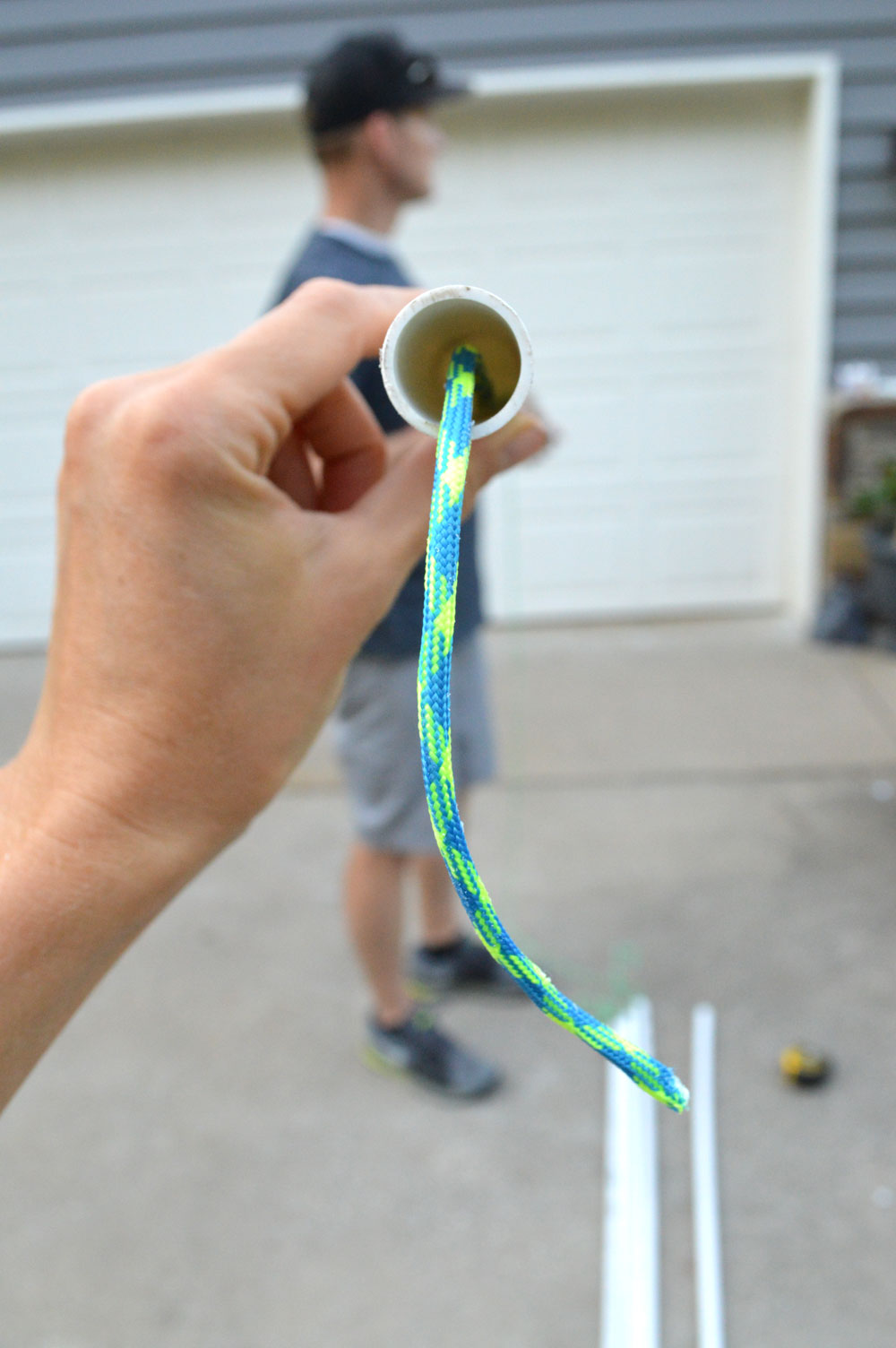
Feed the rope until it comes out the other end.

Measure the midpoint of the pipe, and scratch a pencil line there for reference.
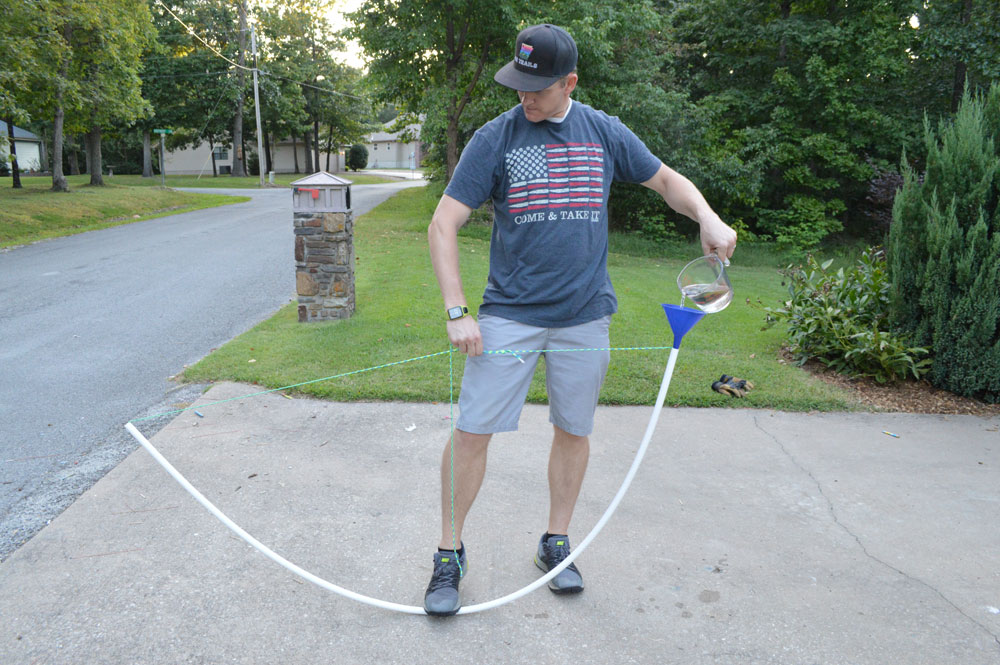
Slowly bend the pipe up, feeding the loose end of the rope into the loop I had you make earlier. Pull the rope together until the pipe resembles a bow and arrow shape. *Warning* – do not pull it completely into the finished “U” shape yet, else you will risk kinking your pipe when the water is poured in. I learned this the hard way.
Tie a sliding knot (I use a double half hitch) so you can easily tighten and loosen the rope. Now, slowly pour the boiling water in the pipe. For reference, an 8ft pipe takes about 3-4 cups of water to fill.
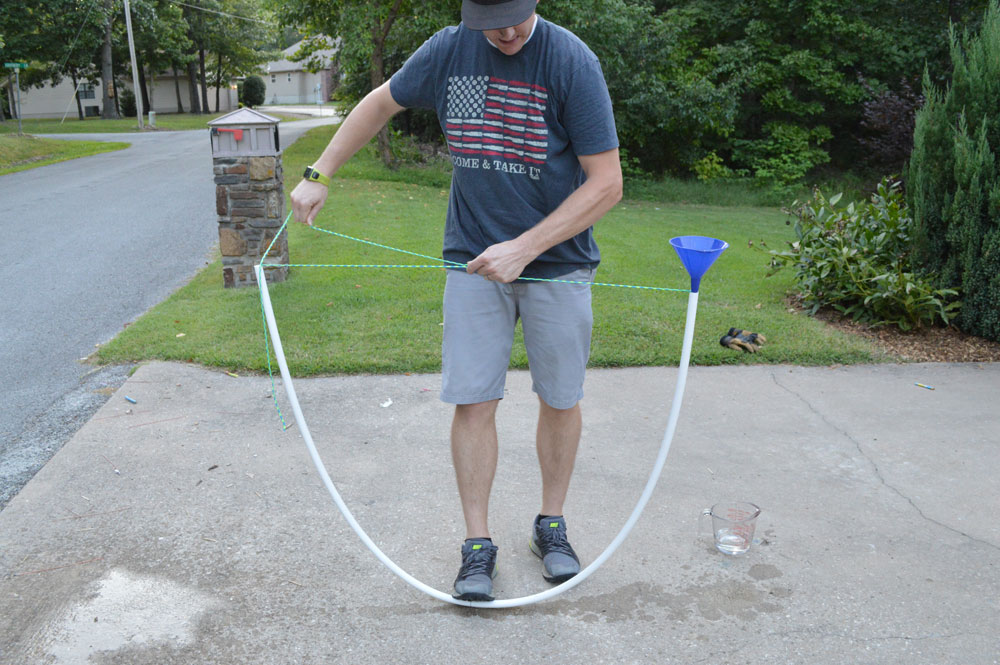
Once filled with hot water, you will immediately feel the pipe loosen and bend. You have about 20-30 seconds to make your adjustments, tighten the rope, and then hold the pipe in place as it “cures”. Use that midpoint mark you made on the pipe for reference to help make a symmetrical bend.

If you want, let it sit for a second while you prepare the next pipe.
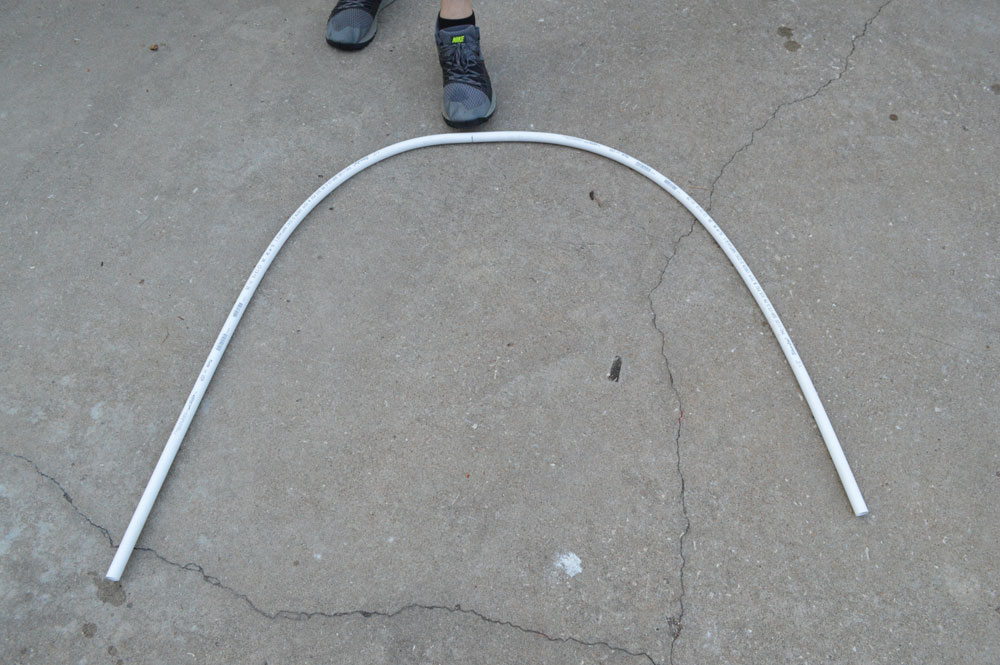
First “rib” finished! With the rope removed, the pipe may widen a bit in shape, but not to worry. As long as you have the basic “U” shape, you are all set.
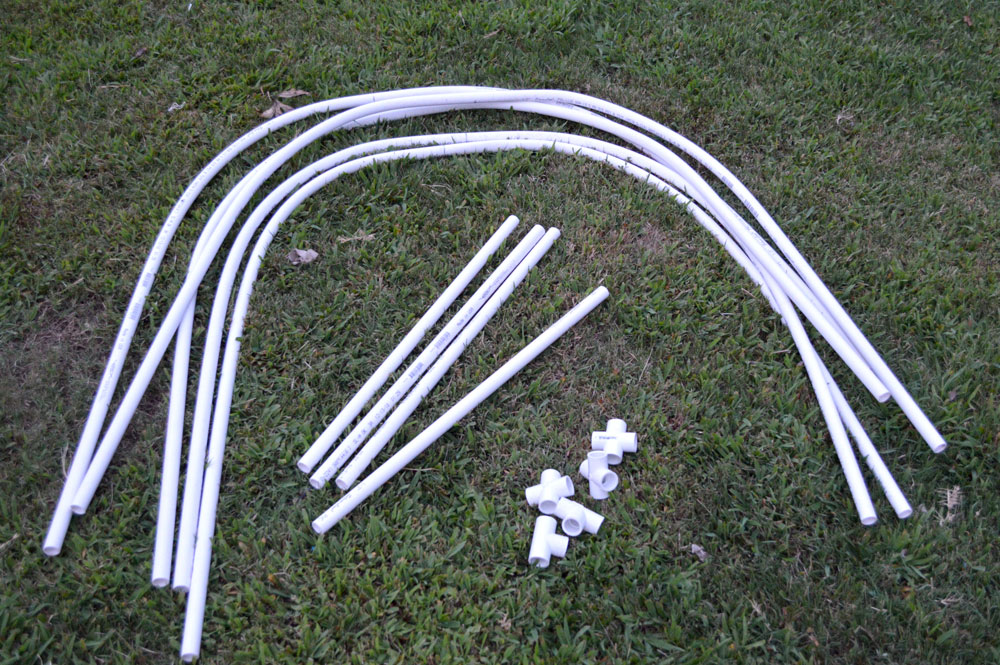
After bending all the pipes, we are ready for one final cut, then the glue up!
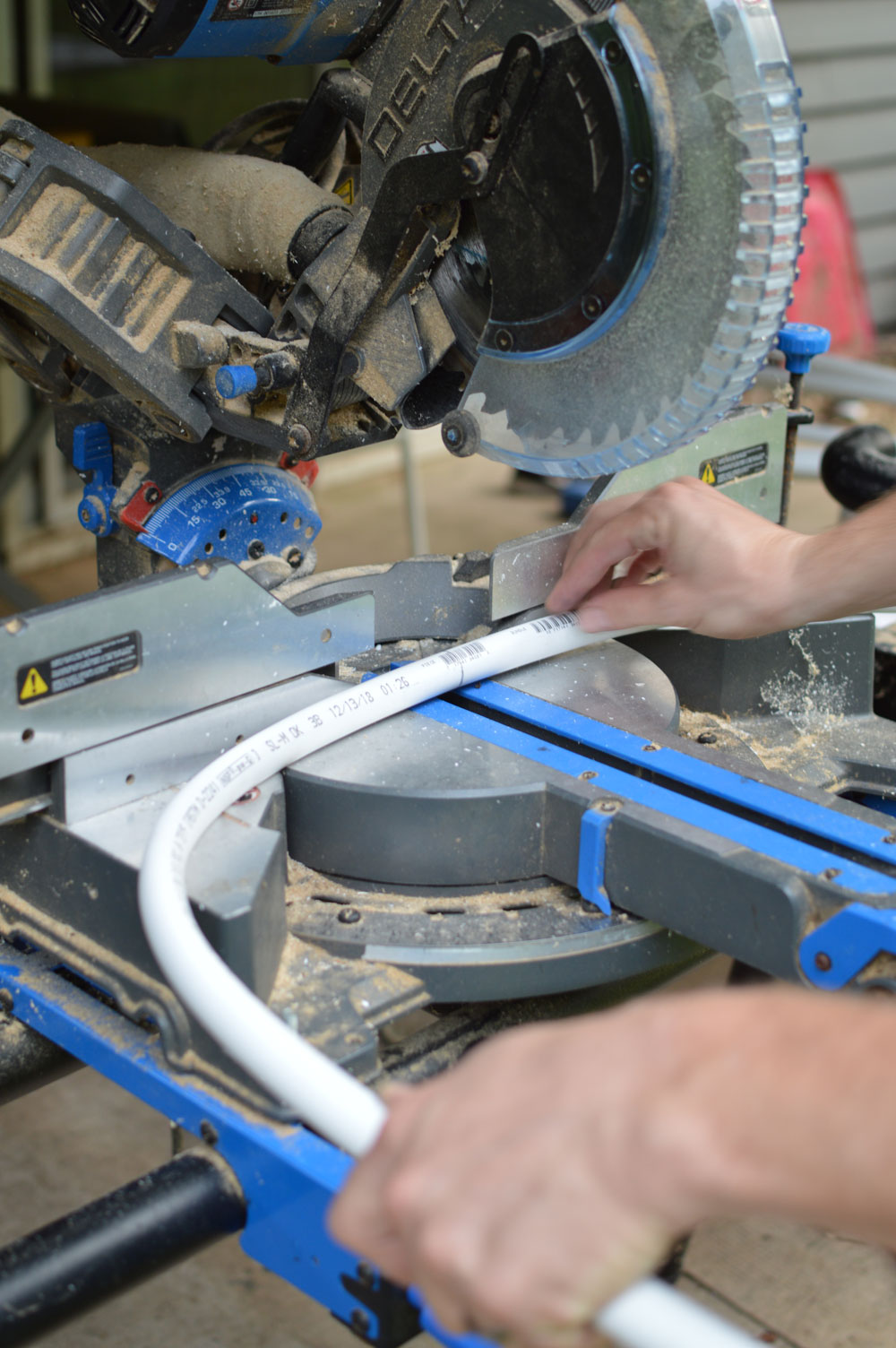
Cut each rib in half
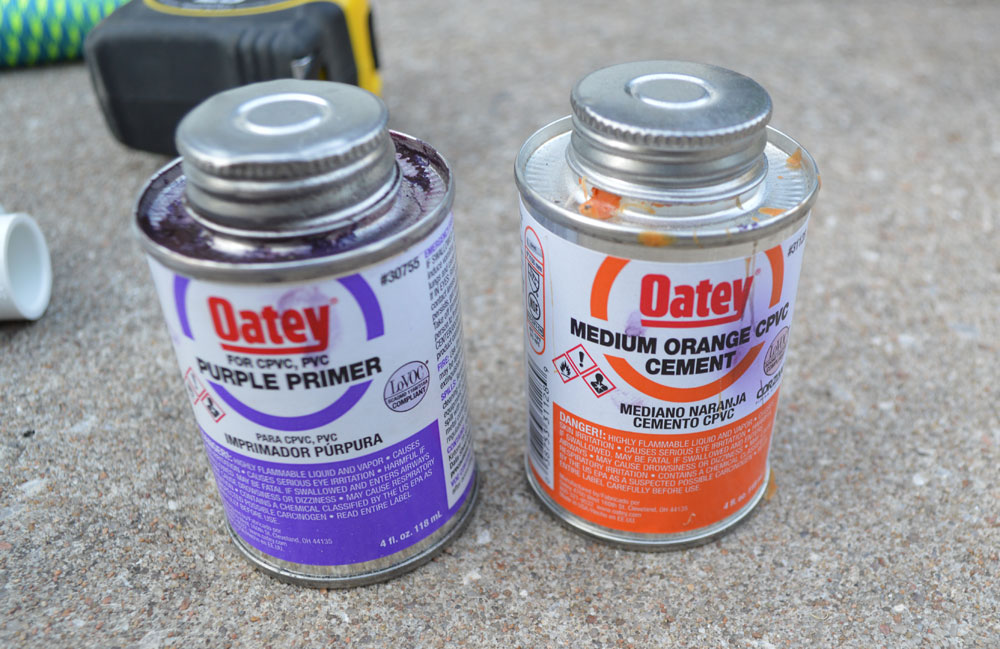
Pipe glue and primer, available wherever pipes are sold

Prime BOTH the pipes, and the fittings. Then immediately apply the liquid cement to both as well.

Add glue where hoops will go. Don’t add glue where the “backbone” pieces will connect.
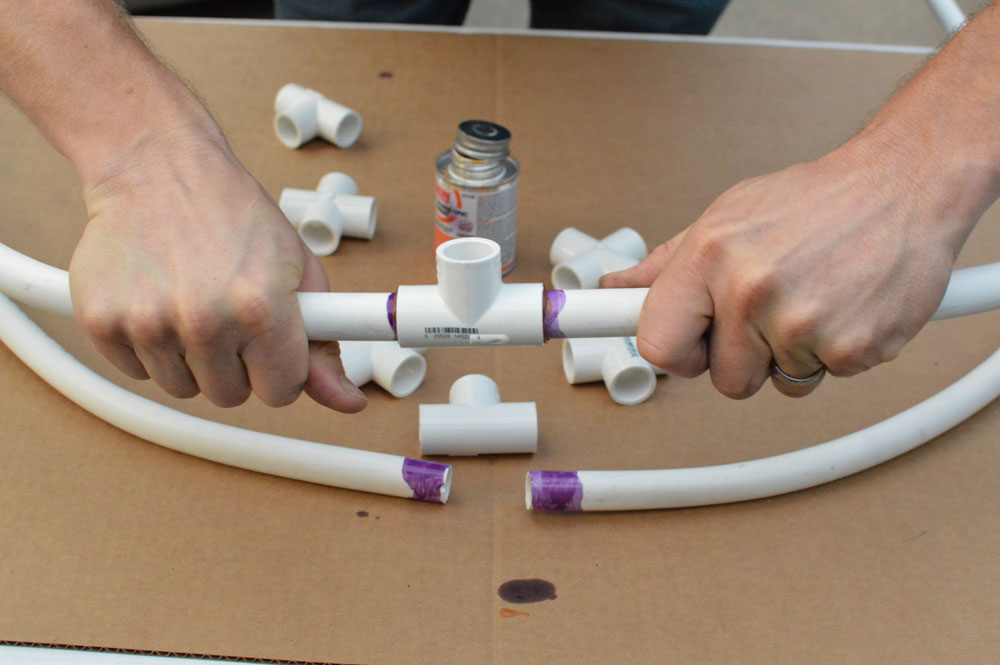
Fit pipes to the fitting.
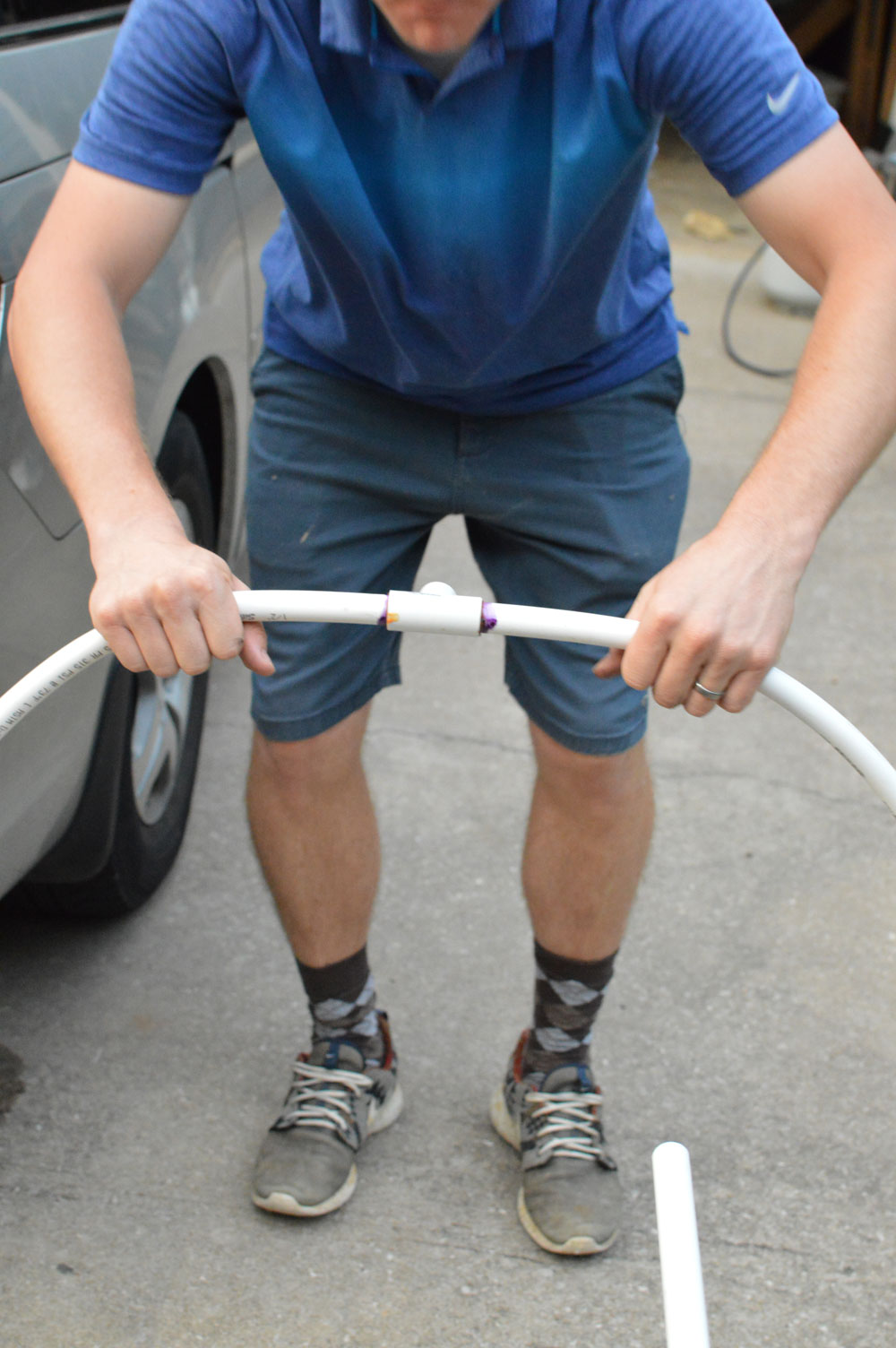
Make sure the fitting is parallel to the ground, so that the connecting pieces will easily slide in.
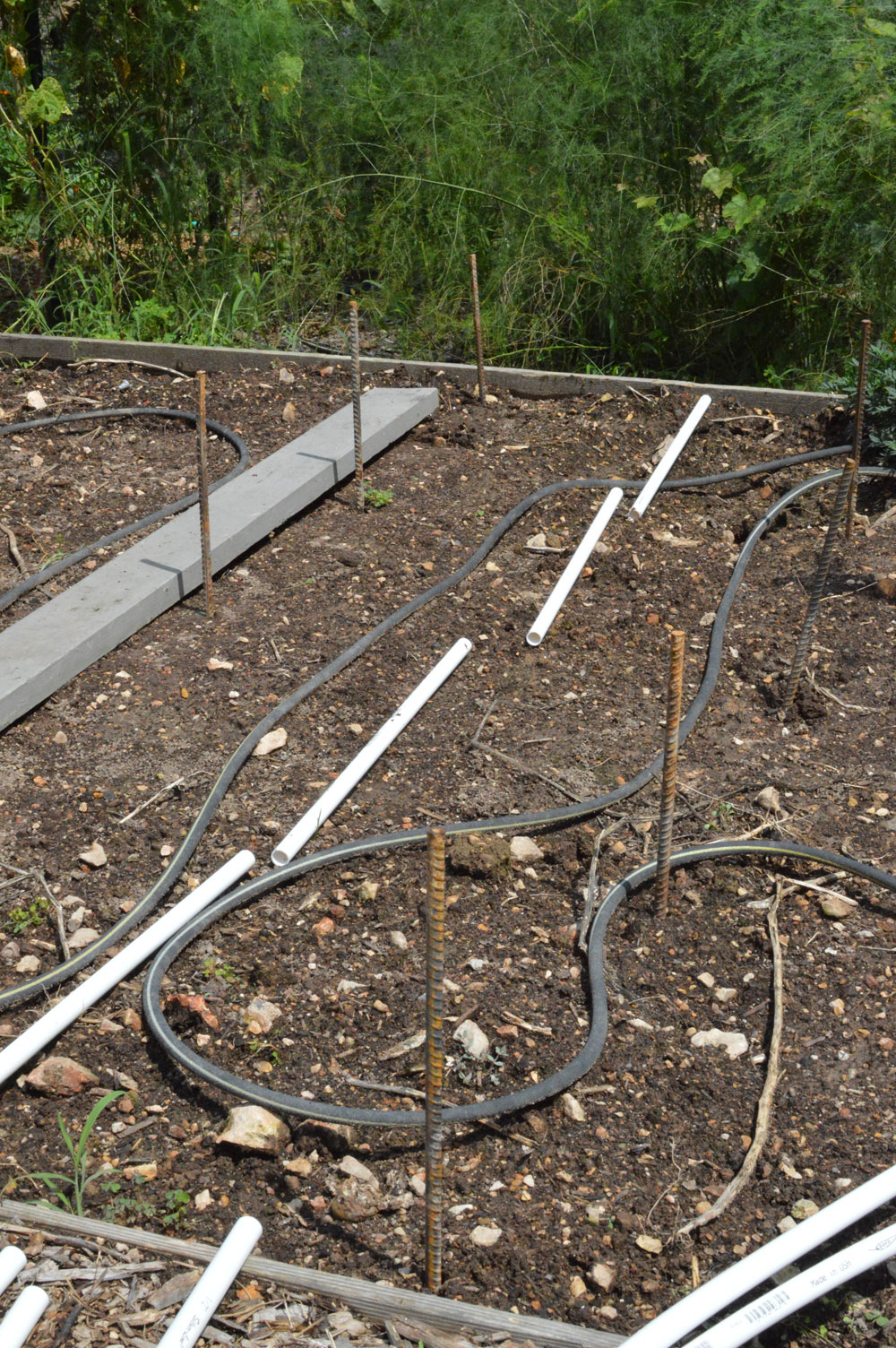
Now in the garden, I laid out the “backbone” pieces, to give me reference for where I needed to pound the rebar for the ribs, roughly 2 feet apart
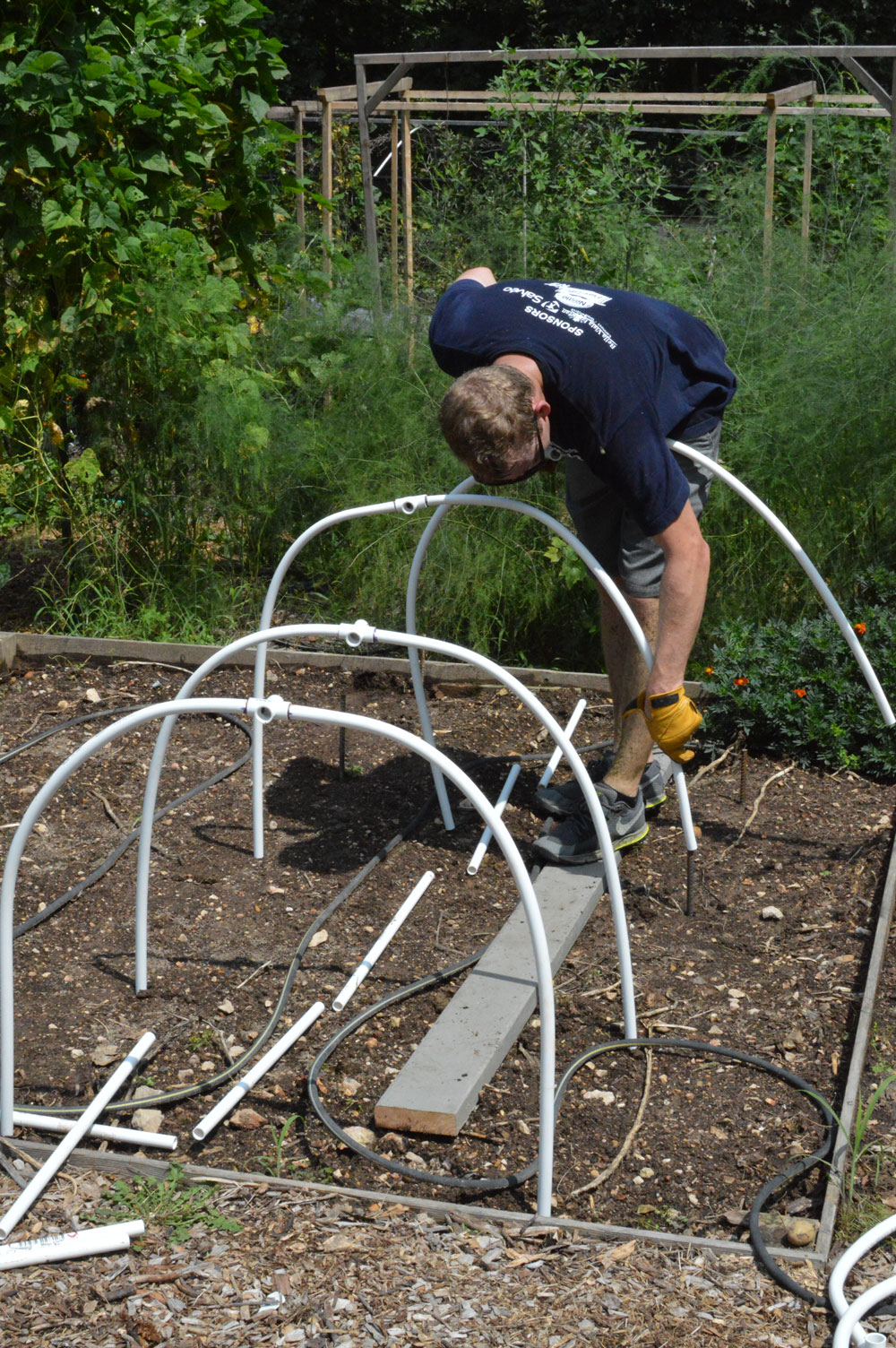
Slide the ribs over the rebar. Adjust if needed. *Note* depending on how wide your tunnels are, or what you are planting, you tunnels may be too tall. If they are, cut small increments off the bottom ends of each rib until you are at the size/height you need.
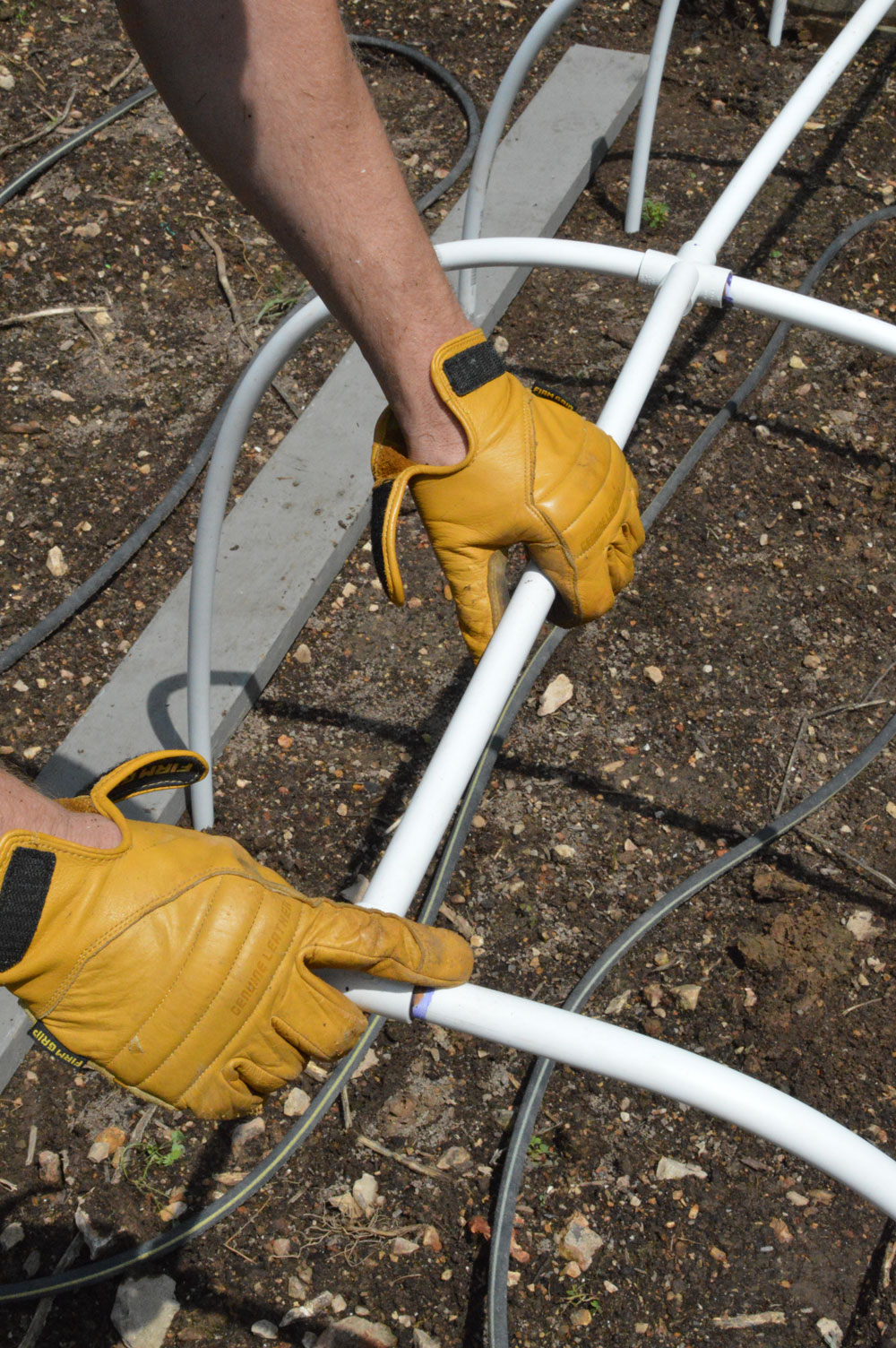
Connect the backbone to the ribs. Again, don’t glue the connector pieces. This will allow you to move the low tunnel around the garden or put in storage if needed.

Almost done! Now it’s ready to plant
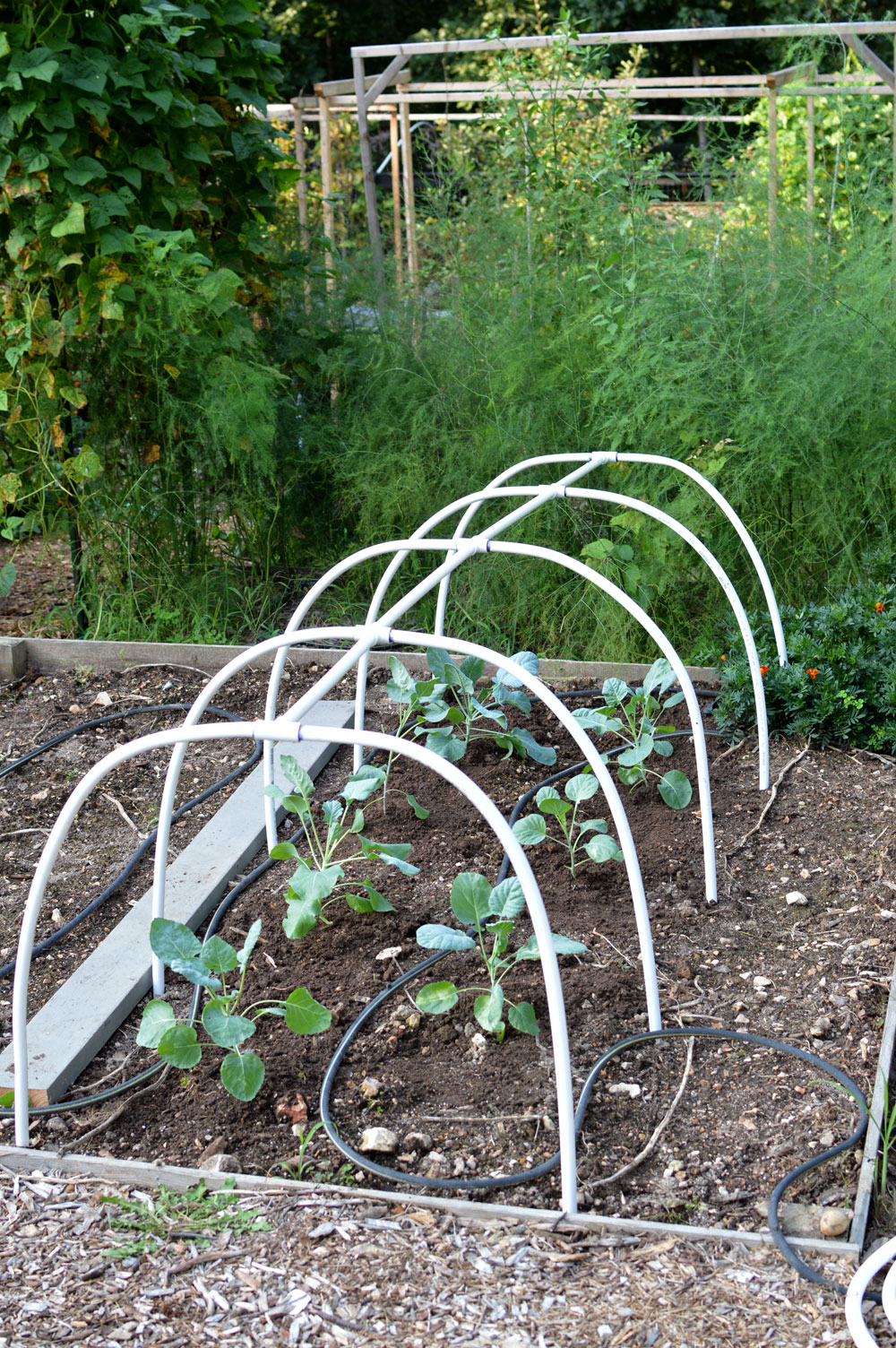
Plant, then cover.
At this point you have a few options. Usually we use the white Agribon row cover fabric if it’s spring or going into fall, this will raise temperature inside the row tunnel a few degrees. However, at the time of writing this, it is August and 95 degrees some days. We opted to cover our plants with shade cloth which keeps these heat sensitive brussel sprouts cool. And bonus! It keeps out cabbage moths as well.
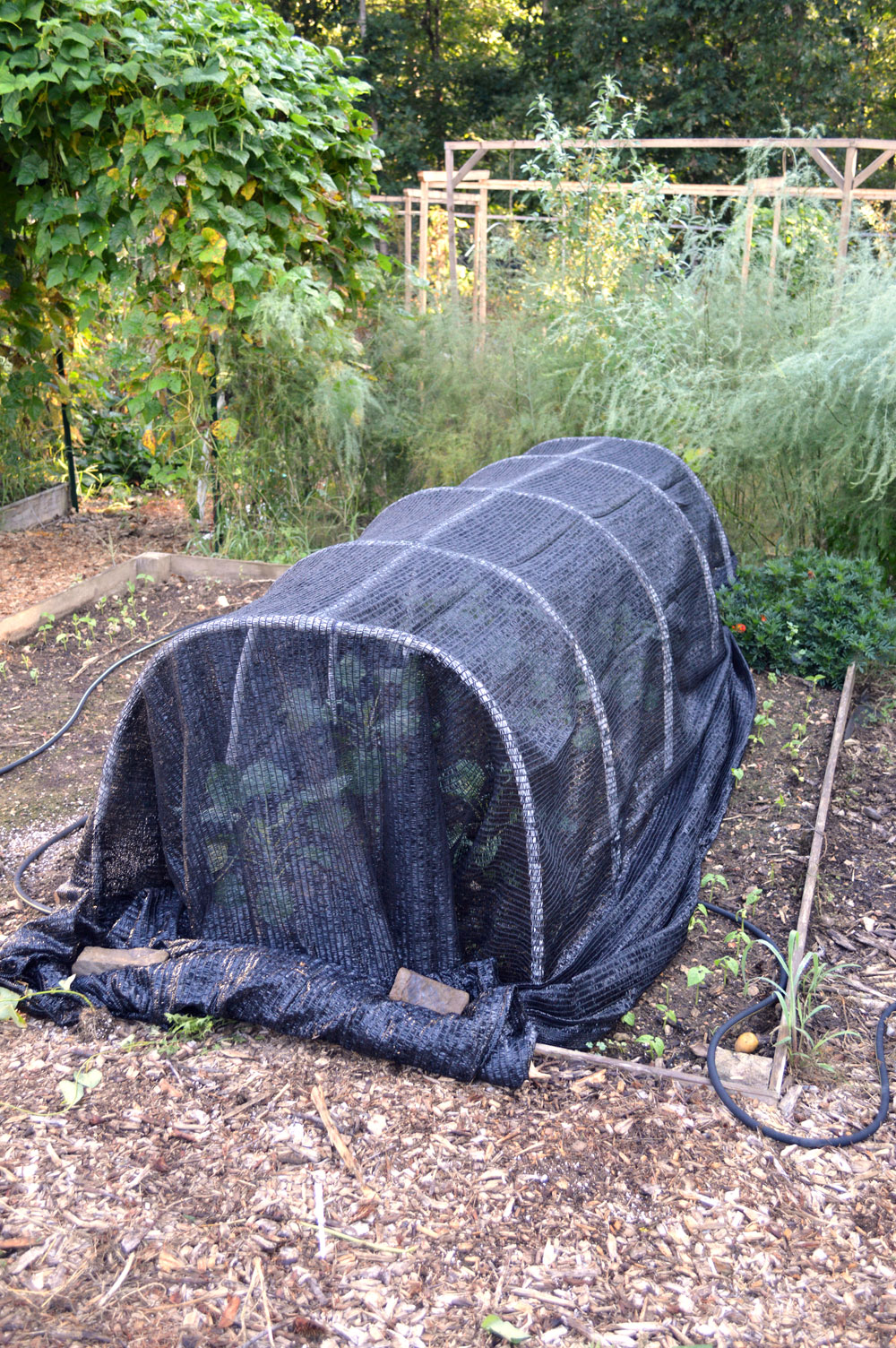 Shade Cloth on Low tunnel
Shade Cloth on Low tunnel
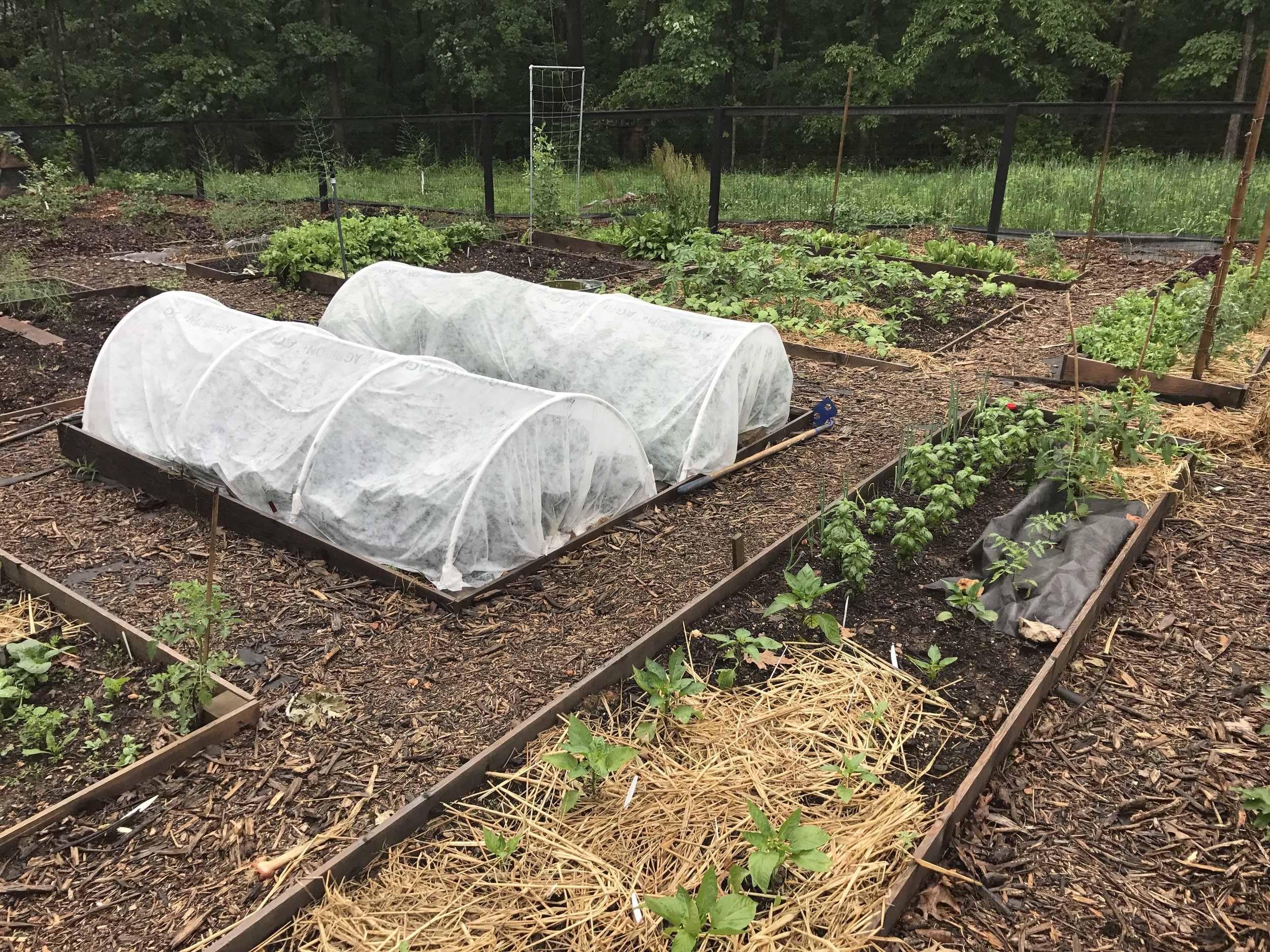 Row Cover on Low tunnels
Row Cover on Low tunnels
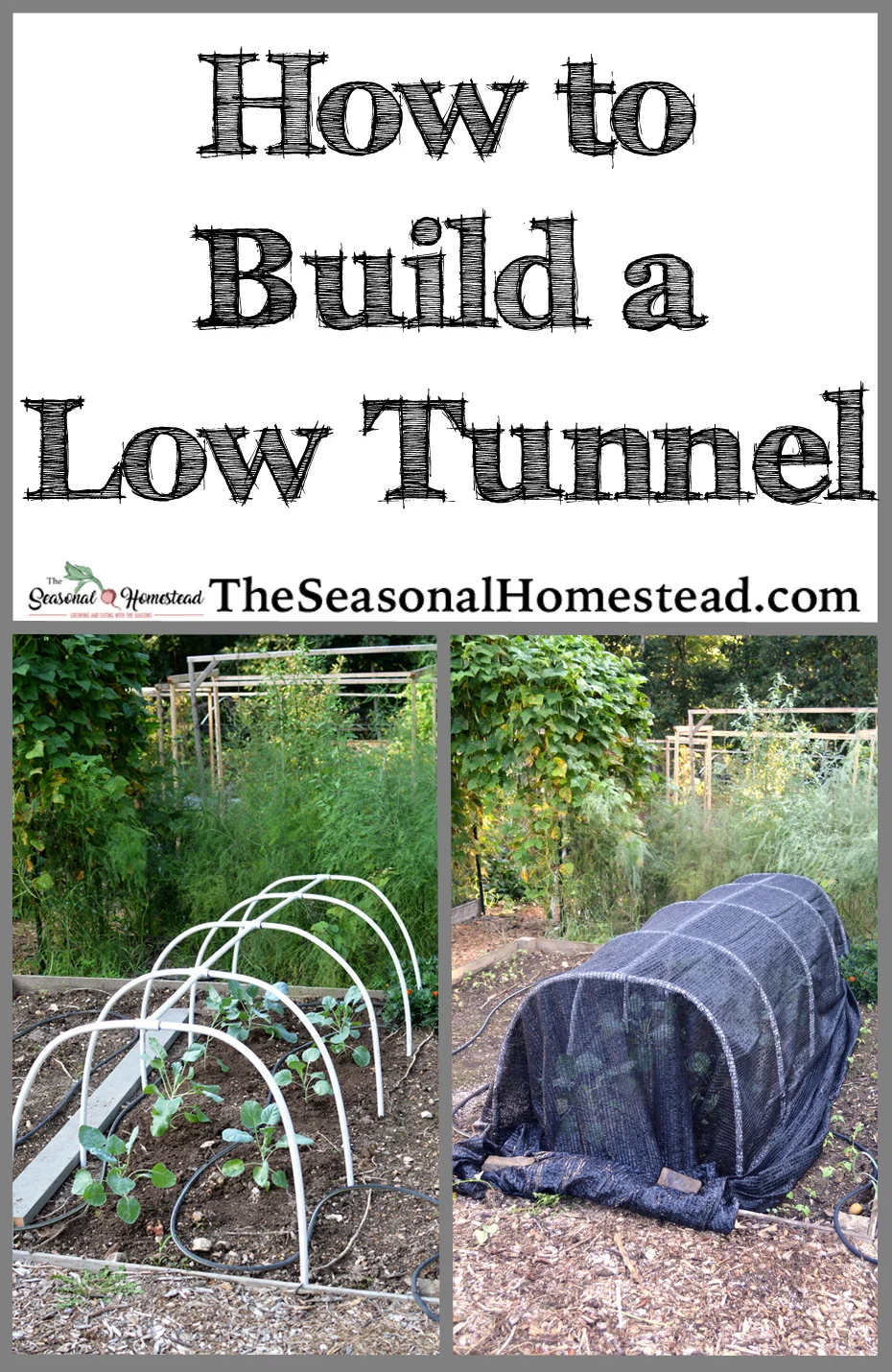
Want more garden tips? Check out these posts.

2 comments
Becky and Cameron,
Great idea and job well done on your instructional tutorial! I really appreciated your attention to all the details and stepwise photos. And, I could relate to your mention of the differences in PVC pipe-which took some trial and error when we were repairing our sprinklers.
I’m in the beginning phase of planning my garden to eat year-round and would love to see more tutorials/hints/considerations for building your fences, beds, irrigation, chicken coop and compost area.
Lastly, I appreciated the inclusion of your garden plans and rotation plans.
Thank you!
Debra
Hey Debra,
Thank you so much for your kind words! I’ll be sure to incorporate some of your suggestions for posts in the future! I love getting ideas of topics you need 🙂